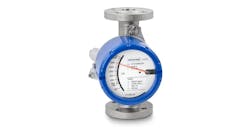NSF International (www.nsf.org) published a new national standard designed to reduce nitrogen from residential wastewater. The focus of the standard is to decrease excess nitrogen from any source that flows into surface waters and stimulates algae formation, a condition that could potentially harm marine life habitat and destroy fish and shellfish populations.
NSF/ANSI Standard 245: Wastewater Treatment Systems – Nitrogen Reduction was developed to address regulatory agencies’ concerns about onsite wastewater systems’ environmental impact. Specifically, this standard addresses the impact these systems have on ground water used as a drinking water source, and on surface waters receiving discharge from the systems.
Nitrite and nitrate in concentrations above the U.S. Environmental Protection Agency’s (EPA, www.epa.gov) drinking water standards may present public health problems for infants, pregnant women, and populations that may be immunocompromised.
NSF/ANSI Standard 245 establishes performance measures and material, design and construction requirements for residential wastewater treatment systems. Individual residential wastewater treatment systems that meet NSF/ANSI Standard 245 requirements could reduce the amount of nitrogen discharged into surface waters by at least 50 percent in some watersheds, according to NSF.
The EPA estimates that onsite wastewater systems are used by 25 percent of all homes in the United States and by nearly 35 percent of new land development. Onsite systems are also used by almost 50 percent of all people in some states.
NSF/ANSI Standard 245 was developed based on a protocol developed under the EPA’s Environmental Technology Verification (ETV) Program’s Water Quality Protection Center (www.epa.gov/etv/centers/center4.html). The protocol for nitrogen reduction for residential wastewater treatment systems served as a guide to evaluate six different nitrogen reduction technologies. The new standard incorporates pass/fail criteria for system performance and additional requirements for alarm systems, tank requirements, noise levels, and manuals.
NSF/ANSI Standard 245 was reviewed by the NSF Joint Committee on Wastewater Technology, a group comprised of regulators, industry representatives and product users, as well as by the NSF Council of Public Health Consultants, a public health advisory panel.
For more information on the new standard, contact Adriana Mastronardi, business unit manager, NSF Wastewater Treatment Units Program, at 734-913-5754 or [email protected].

